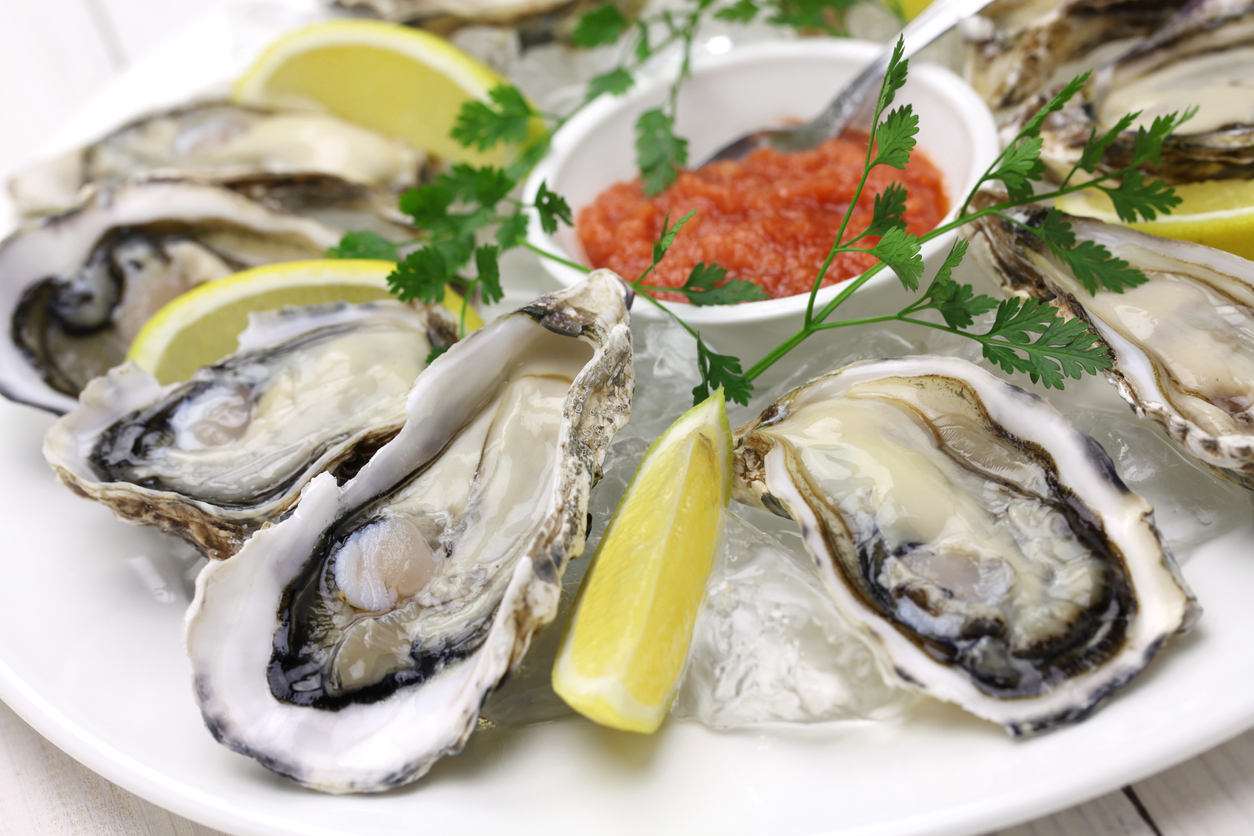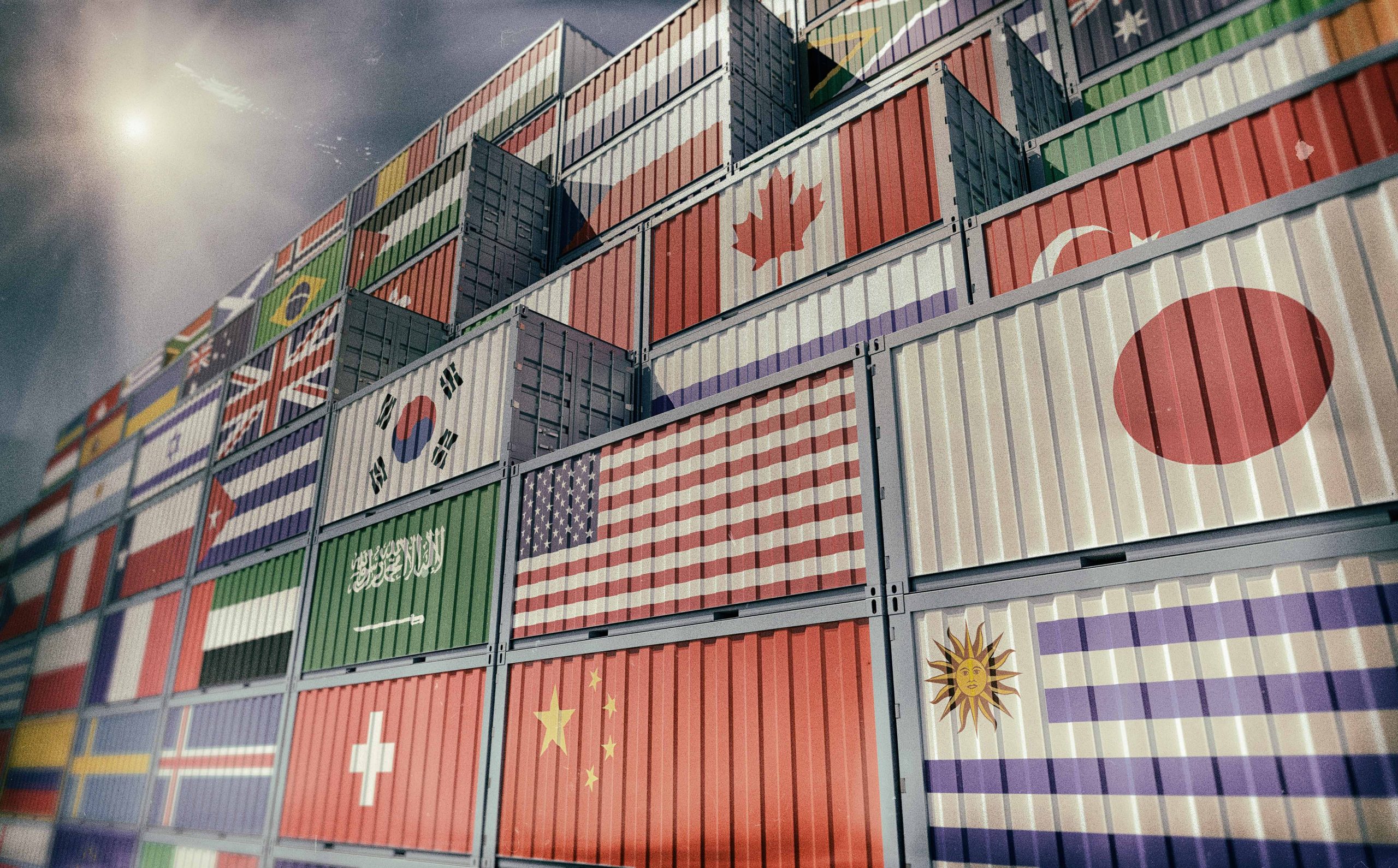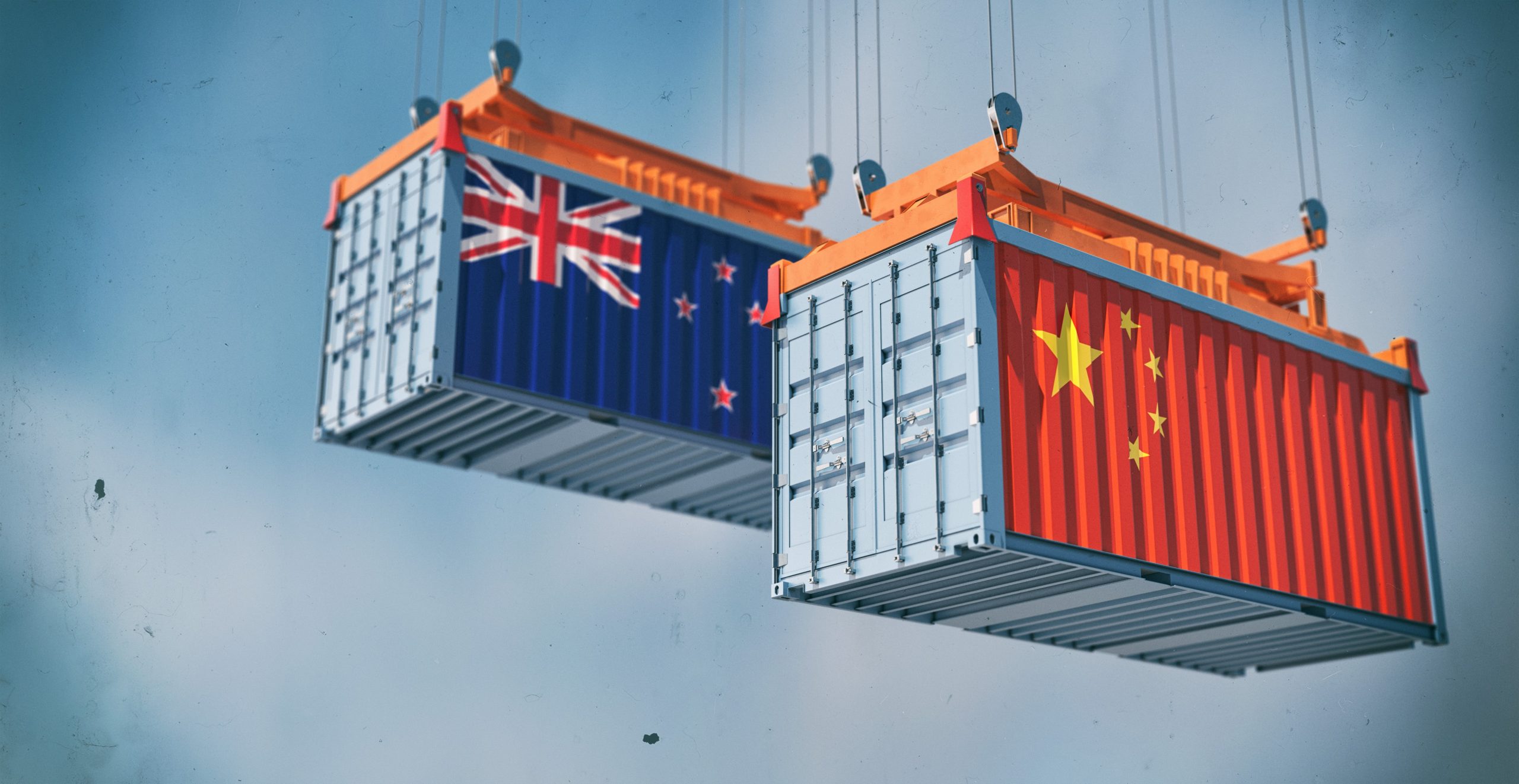The Economics of Oyster Pricing: Unraveling the Factors that Influence Market Prices
The Economics of Oyster Pricing: Unraveling the Factors that Influence Market Prices
Are you a fan of seafood delicacies? Have you ever wondered why oysters come with such a hefty price tag? Join us on an intriguing journey as we delve into the fascinating world of oyster economics. In this blog post, we will unravel the mystique behind the fluctuating market prices of these delectable mollusks. From environmental factors to supply and demand dynamics, get ready to discover how various elements influence the economics of oyster pricing. So grab your shucking knife and let’s dive deep into this captivating exploration!
Introduction to the Oyster Industry and Market Prices
The oyster industry has been an important part of the seafood market for centuries. Oysters are highly sought after for their unique flavor and nutritional value, making them a popular delicacy around the world. However, like any other commodity, the price of oysters is subject to various factors that influence market prices.
In this section, we will take a closer look at the oyster industry and how it operates in terms of pricing. Understanding the basics of this industry is crucial in unraveling the complex factors that determine oyster market prices.
To begin with, let’s first understand what makes oysters such a valuable commodity. Oysters are a type of bivalve mollusk that live in brackish or saltwater environments. They have a distinct taste and texture, which can vary depending on where they are harvested from. Oysters are also known for their high nutritional value as they are rich in protein, vitamins, minerals, and essential fatty acids.
The production process for oysters involves cultivating them on farms or harvesting them from wild beds. In either case, the process is labor-intensive and requires significant investment in terms of time and resources. The farming method involves growing young oysters (known as spat) on beds or cages until they reach maturity before being harvested.
When it comes to harvesting wild oysters, there are strict regulations in place to ensure sustainable fishing practices and protect natural habitats. This means that only a certain number of oysters can be harvested at specific times throughout the year.
Factors That Affect Oyster Pricing:
Oysters are a highly sought-after delicacy that has been enjoyed by humans for centuries. From luxurious restaurants to casual seafood markets, the demand for oysters is continuously growing. However, have you ever wondered why oyster prices can vary so drastically between different locations and times of the year? The answer lies in understanding the various factors that influence oyster pricing.
1. Location
The location of where an oyster is grown can have a significant impact on its price. Oysters grown in areas with high demand, such as big cities or tourist destinations, will typically command higher prices due to their proximity to consumers. Additionally, some regions are known for producing premium-quality oysters, which can also affect their pricing.
2. Supply and Demand
Like any other commodity, the fundamental economic principle of supply and demand greatly affects oyster pricing. When there is a limited supply of oysters but high demand from consumers, prices will naturally increase. Conversely, when there is an abundance of oysters available in the market but low demand from consumers, prices may decrease.
3. Harvesting Season
Oysters are harvested seasonally; therefore, their availability varies throughout the year. In general, peak harvesting seasons for oysters are during the colder months when they reach their optimal size and quality. During these times of increased supply and harvesting activities, prices tend to be lower compared to off-season periods when supplies may be scarce.
– Supply and Demand
Supply and demand is a fundamental concept in economics that plays a crucial role in determining the prices of goods and services. The same principle applies to the oyster market, where the interaction between supply and demand determines the market price of this highly sought-after delicacy.
In terms of supply, oysters are considered a natural resource as they are harvested from their natural habitats in bodies of water such as oceans, bays, and estuaries. This means that there is a limited supply of oysters available at any given time. Factors such as weather conditions, pollution levels, and fishing regulations can affect the availability of oysters. For example, severe storms or red tide events can result in a decline in the number of oysters available for harvest. Similarly, strict fishing regulations may limit the amount of oysters that can be caught by fishermen.
On the other hand, demand for oysters is driven by various factors such as consumer preferences, economic conditions, and cultural traditions. Oysters have been consumed for centuries and have gained popularity globally as a luxury food item associated with high-end restaurants and special occasions. This has resulted in a steady increase in demand over recent years.
– Harvesting Methods
Harvesting methods play a crucial role in determining the market prices of oysters. The method used to harvest oysters can impact not only the quantity but also the quality of the oysters, ultimately affecting their value in the market.
1. Manual Harvesting:
This traditional method involves physically picking oysters from their beds by hand or using rakes, tongs, or other tools. Manual harvesting is labor-intensive and requires skilled workers who have a deep understanding of the environment and know how to handle oysters carefully.
The advantage of manual harvesting is that it allows for selective picking, where only mature and high-quality oysters are harvested while leaving behind smaller ones to continue growing. This results in a higher overall quality of oysters being brought to market, which commands a premium price.
However, this method is time-consuming and expensive as it requires more manpower and equipment compared to other methods. As a result, manual harvesting may lead to higher prices for consumers due to increased production costs.
2. Mechanical Harvesting:
Mechanical harvesting involves the use of machinery such as dredges or power-driven tongs to gather large quantities of oysters quickly. This method is more efficient than manual harvesting and allows for larger areas to be harvested at once.
One advantage of mechanical harvesting is that it reduces labor costs significantly as fewer workers are needed compared to manual harvesting. However, this method tends to result in lower-quality oysters being brought to market as there is less selectivity during the gathering process.
– Seasonality and Availability
Seasonality and availability are two important factors that heavily influence the market prices of oysters. Understanding these factors is crucial for both oyster farmers and consumers to make informed decisions about pricing and purchasing.
Oysters, like other seafood, have a distinct seasonality due to their breeding cycle. They spawn during warmer months, typically from May to August, which affects their taste and texture. As a result, oysters harvested during this time may be less desirable in terms of flavor and appearance compared to those harvested during cooler months.
This leads us to availability – the supply of oysters in the market at any given time. Oyster farming is a highly seasonal industry, with most farms harvesting between September and April when the water temperature is lower and the oysters are at their peak quality. During this time, there is an abundance of fresh oysters in the market, resulting in lower prices due to increased competition among suppliers.
Conversely, during summer months when spawning occurs, there is a decrease in supply as many farms close or reduce production to allow their stock to replenish. This reduction in supply leads to an increase in demand for available oysters, driving up prices.
Another factor affecting availability is weather conditions. Severe storms or hurricanes can damage oyster beds and disrupt harvests, causing a decrease in supply and subsequently raising prices. On the other hand, mild winters can lead to higher survival rates for young oysters (called spat), leading to more abundant supply in subsequent years.
– Location and Competition
Location plays a significant role in the economics of oyster pricing. The demand and supply of oysters vary greatly depending on their location, which ultimately affects market prices. Here, we will delve into the various factors that influence market prices in different locations and how competition also plays a crucial role.
Geographical Location:
One of the primary factors that affect the price of oysters is their geographical location. Oysters are highly sensitive to their surroundings, and different locations provide unique conditions for growth and harvesting. For instance, oysters grown in colder waters tend to have a slower growth rate compared to those grown in warmer waters. Therefore, oysters from colder regions may be priced higher due to their scarcity.
Furthermore, the quality and taste of oysters can also vary depending on where they are harvested. Oysters from certain regions or locations are renowned for their distinct flavor profiles and are often considered premium products, commanding higher prices in the market.
Supply Chain Costs:
Another factor that influences oyster pricing is supply chain costs associated with transporting them from their harvesting location to markets. As oyster farming often takes place in remote coastal areas, transportation costs can be quite high, especially if they need to be transported long distances or shipped overseas.
In addition to transportation costs, other expenses such as labor costs, packaging materials, storage fees, and marketing expenses all add up to the total supply chain cost of an oyster product.
The Role of Economics in Determining Oyster Prices:
The oyster industry is a vital sector of the seafood market, with millions of dollars in revenue generated each year. In recent years, there has been an increase in demand for oysters due to their unique taste and perceived health benefits. However, like any other commodity, the price of oysters fluctuates based on several economic factors.
In this section, we will delve into the role that economics plays in determining the price of oysters. Understanding these factors can give us a better insight into why prices change and how they may continue to do so in the future.
Supply and Demand
The most crucial factor affecting oyster prices is supply and demand. It is a basic economic principle that states when demand increases or supply decreases, prices tend to rise. On the other hand, when there is a decrease in demand or an increase in supply, prices tend to fall.
For oysters specifically, changes in supply are heavily influenced by environmental conditions. Oysters grow best in clean waters with specific salinity levels and temperatures. Any changes in these conditions can affect their growth rate and ultimately lead to fluctuations in supply.
Meanwhile, demand for oysters can be affected by various factors such as consumer preferences, seasonality (i.e., increased demand during holiday seasons), and overall economic stability. If consumers perceive that there is an abundance of high-quality oysters available or if they face financial constraints due to a recession or unemployment rates, it could lead to a decrease in demand for oysters.
– Price Elasticity of Demand
Price elasticity of demand is a crucial concept in understanding the dynamics of oyster pricing. Simply put, it measures the responsiveness of consumer demand to changes in price. In other words, it helps us understand how much consumers are willing and able to adjust their consumption habits in response to changes in the market price of oysters.
The price elasticity of demand for oysters can vary greatly depending on a variety of factors such as location, seasonality, availability, and consumer preferences. Let’s take a closer look at these factors and how they influence the price elasticity of demand for oysters.
1. Location: The location where oysters are harvested plays a significant role in determining their market price. Oysters that are harvested from remote or hard-to-reach areas may cost more due to transportation costs and scarcity. Consumers who have easy access to these locations may be less sensitive to changes in prices as they have limited options for purchasing them elsewhere. On the other hand, consumers who live far away from oyster harvesting locations may exhibit higher price sensitivity as they have alternative options available.
2. Seasonality: Similar to many other types of seafood, oyster production is seasonal which impacts its market price. During peak seasons when there is an abundance of supply, prices tend to be lower due to high competition among suppliers. This leads to a higher elasticity of demand as consumers can easily switch between different suppliers without much impact on their consumption habits.
– Cost of Production
The cost of production plays a crucial role in determining the market prices of oysters. Oyster farming is an intricate process that requires significant investments and resources, which ultimately impact the final price of these shellfish.
1) Grow-out Phase Costs: The first stage of oyster production is the grow-out phase, where oyster larvae are grown into adult oysters. This phase involves costs such as purchasing spat (young oysters), labor for handling and sorting them, and setting up suitable growing conditions, including appropriate water quality parameters, temperature control systems, and predator deterrents.
2) Nursery Phase Costs: After the grow-out phase comes the nursery phase, where small juvenile oysters are transferred to a different growing area for further growth. This step incurs costs such as leasing or purchasing land or sea space for nursery beds, labor for maintenance and monitoring of the beds, and equipment costs for handling and transporting the juvenile oysters.
3) Labor Costs: As mentioned above, labor costs are involved at various stages of oyster production. These include tasks such as seeding spat on shell bags or trays during the grow-out phase, maintaining nurseries during the nursery phase, harvesting adult oysters from their growing areas before sale or distribution to restaurants/retailers.
– Government Regulations and Policies
Government regulations and policies play a significant role in the pricing of oysters in the market. These regulations and policies are put in place to ensure the safety and sustainability of the oyster industry, as well as to protect consumers from potential health risks.
One major regulation that affects oyster pricing is the harvesting season. Oysters can only be harvested during certain months of the year when they are at their peak freshness and flavor. This limited harvesting season creates a supply constraint, as there is a finite amount of oysters available for consumption. As a result, prices tend to increase during this time due to high demand and limited supply.
Another important policy that impacts oyster pricing is food safety regulations. In many countries, including the United States, oysters must undergo strict testing for bacteria such as Vibrio vulnificus before they can be sold to consumers. This testing process can add additional costs for producers, which may ultimately lead to higher prices for consumers.
Additionally, government-imposed fees and taxes also contribute to the overall cost of oysters. Oyster farmers are often required to pay licensing fees or taxes on their production, which can ultimately drive up the price of oysters.
In some cases, government subsidies may also influence oyster prices. For example, in regions where the production of oysters is seen as vital for economic growth or cultural heritage preservation, governments may provide subsidies or incentives to support local farmers. This can lead to lower prices for consumers in these areas.
Case Study: Analyzing the Fluctuations in Oyster Prices in Different Regions
Introduction to Case Study
In this section, we will be taking a closer look at a case study that analyzes the fluctuations in oyster prices in different regions. Oysters are a highly sought-after delicacy and their market prices can vary significantly depending on various factors. By studying the patterns of oyster pricing in different regions, we can gain valuable insights into the economics behind it and understand the factors that influence market prices.
Case Study Background
The case study was conducted over a period of one year and focused on three key oyster-producing regions – East Coast, West Coast, and Gulf of Mexico. These regions account for the majority of oyster production in the United States and also have significant differences in terms of geography, climate, and harvesting methods.
Data Collection
To analyze the fluctuations in oyster prices, data was collected from multiple sources including fisheries departments, industry reports, and seafood pricing databases. The data included average wholesale prices for different types of oysters (e.g., Eastern vs. Pacific), price trends over time, as well as information on other relevant factors such as supply levels and demand.
Analysis Methodology
The data collected was analyzed using statistical techniques such as regression analysis to identify any correlations between variables. In addition to this quantitative analysis, interviews were also conducted with various stakeholders including oyster farmers, distributors, and buyers to gather their perspectives on pricing trends.
Sustainable Pricing
Sustainable pricing refers to the practice of setting prices that not only account for the costs of production, but also take into consideration the long-term impact on the environment and society. In the oyster industry, sustainable pricing is becoming increasingly important as consumers are becoming more conscious about where their food comes from and how it is produced.
One factor that influences market prices in the oyster industry is sustainability certifications. These certifications, such as Certified B Corporations or Marine Stewardship Council (MSC) certification, indicate that a company is adhering to certain environmental and social standards in their production process. When consumers see these certifications, they may be willing to pay a premium for oysters knowing that they have been sustainably sourced.
Another aspect of sustainable pricing in the oyster industry is ensuring fair wages and working conditions for those involved in harvesting and processing oysters. This includes providing adequate safety measures for workers and paying them a living wage. By factoring in these costs, companies can ensure that their pricing strategies are ethical and equitable.
The location of an oyster farm can also influence its market price. Farms located near heavily polluted areas may have lower prices due to concerns about contamination, while those situated in pristine waters may be able to command higher prices due to perceived quality. This highlights the importance of prioritizing sustainable practices in order to maintain healthy growing environments and protect both human health and marine ecosystems.








Comments are closed.